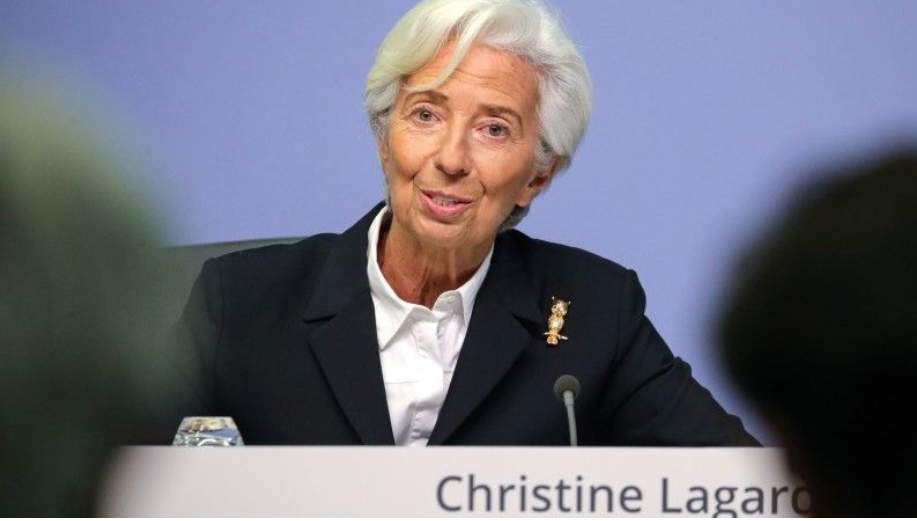ABN Amro har analyseret ECB-chefen, Christina Lagardes, tale i EU-parlamentet, og banken hæfter sig ved Lagardes sprogbrug. Hun kom ikke med politik-udspil, men det var hendes verbale intervention, der var afgørende. Hun lagde vægt på, at EC B tæt følger de “nominelle obligationsrenter”. Hun sagde ikke “realrenterne”, som er steget mindre den seneste tid end de nominelle renter. Udtalelserne fik statsobligationerne til at falde svagt. Men hvis den verbale intervention ikke er nok, kan ECB senere hen skride til flere obligationsopkøb eller komme med klarere udmeldinger om f.eks. inflationen, mener ABN Amro.
Lagarde’s verbal intervention
ECB View: Closely monitoring nominal yields now (as well as the euro) –
ECB President Christine Lagarde made a verbal intervention to cap the rise in government bond yields. She went out of her way to highlight the importance of long-term interest rates for the transmission of the ECB’s monetary policy in a speech in the opening plenary session of the European Parliamentary Week (see here).
Ms Lagarde noted that ‘within the broad-based set of indicators that we monitor to assess whether financing conditions are still favourable, risk-free overnight indexed swap (OIS) rates and sovereign yields are particularly important, because they are good early indicators of what happens at downstream stages of monetary policy transmission, since banks use those yields as a reference when setting the price of their loans to households and firms’.
Given this, she warned that ‘the ECB is closely monitoring the evolution of longer-term nominal bond yields’.
The emphasis on ‘nominal yields’ is significant, because comments in January’s Governing Council meeting seemed to focus much more on real yields.
Indeed, according to the account of that meeting, members argued that ‘not every increase in nominal yields should be interpreted as an unwarranted tightening of financing conditions and trigger a corresponding policy response’ and that what ‘mattered from a monetary policy perspective was the evolution of real rates, which had declined to record low levels in recent weeks’.
Of course the bond market sell-off has accelerated since the Governing Council meeting, but it remains the case that the rise in real yields has been much more modest than the rise in nominal yields.
The verbal intervention had a clear market impact, with European government bond yields falling and curves flattening. It remains to be seen whether these remarks prove to be sufficient to cap the rise in yields. The ‘closely monitoring’ language has had only transient success in the past in terms of reversing market moves that the ECB feels are unhelpful to achieving its goals. This raises the question of what the ECB’s next steps would be if yields were to rise further.
The ECB essentially has two options to step up its interventions. Most obviously, it could accelerate the pace of its net asset purchases under the PEPP. It has a lot of scope to do this given the size of the remaining envelope and considering that the pace of purchases slowed considerably from the middle of last year. This would be an appropriate response if further rises in yields were to manifest because of supply concerns reflected in rising term premia.
Alternatively, further rises in yields due to a build up of policy rate hike expectations could be tackled by the ECB strengthening its forward guidance. Here there are a number of options.
In the first place, the ECB would likely emphasise its current guidance that policy rates ‘will remain at their present or lower levels until (it has) seen the inflation outlook robustly converge to a level sufficiently close to, but below, 2 per cent within (its) projection horizon, and such convergence has been consistently reflected in underlying inflation dynamics’.
This could be complemented by stressing that inflation was set to comfortably undershoot its goal over the next three years, hence making rate hikes a distant prospect.
If this does not do the trick, it would then be faced with adjusting its official guidance. It could do this indirectly by signalling an even longer period of net asset purchases under the PEPP. Given that the policy rate will not go up before asset purchases end, this could be a credible signal that the deposit rate will remain on hold for longer than markets were pricing in.
Furthermore, the ECB could add date-based guidance to its current state based guidance. For instance, it could set out exactly when the Governing Council expects that inflation would converge and be reflected in underlying inflation dynamics given current projections.
In any case, unlike in the case of the euro exchange rate (another market variable that it is ‘monitoring’), the ECB has a number of potentially powerful options in its tool box to anchor bond yields.




